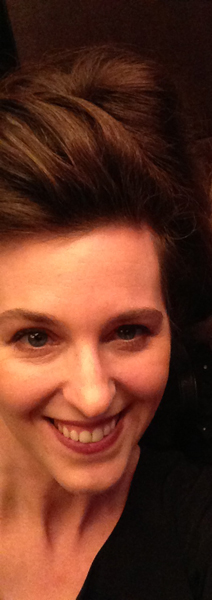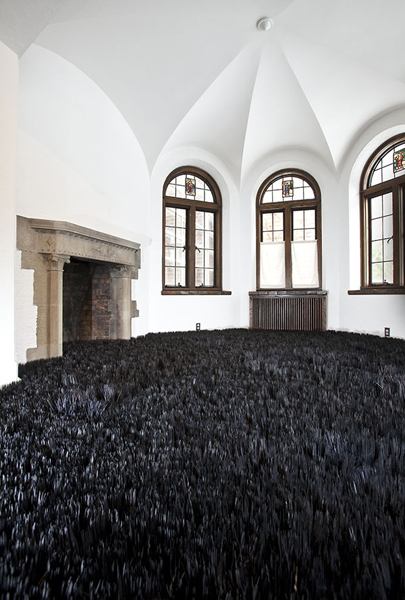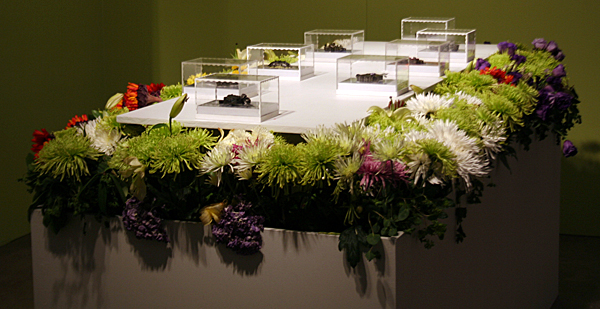Galleries exhibiting jewelry are an important part of our community and the people who run them have interesting backgrounds and stories to tell. In this interview Sienna Patti from Sienna Gallery in Lenox, Massachusetts answered some questions posed by Damian Skinner.
How long have you been running a gallery?
Fourteen years on November 1, 2012.
Where did your interest in contemporary jewelry come from?
Not many galleries were showing jewelry as art at the time and it seemed like a great opportunity for me. My studies in film, theatrical texts and art history stemmed from an interest in the human condition and jewelry is a representation of our social culture. So rich, so naked and brazen in its representation of us and how we understand ourselves, jewelry seemed right for me.
Last year you opened a new, second space in Lenox, which seems like a brave, maybe mad, thing to do. Why? And are you going to do it again?
Yes. Why not? I’m not satisfied – there is always more to explore. Only boring people get bored.
You’ve also been exploring alternative audiences and venues for contemporary jewelry, taking part in art fairs like Pulse in New York. What have you discovered in this process?
Jewelry is only accepted in the art world as art if an artist famous for some other kind of artwork made it. It can also be pigeonholed into ‘design,’ another word for decorative arts, but in this lens it is seen as product because it serves a function that is not purely aesthetic, not art. Bottom line? If you wear it or it has the intention of being worn, it is considered function preceding form and this is not art according to the art fair rules. Sneaking it into the art fairs has been fun, but it requires quite a bit of diligence on my part and artists who are willing to be open-minded and brave.
Do you think there are any differences between contemporary jewelry in North America and contemporary jewelry in other parts of the world?
Let’s compare the United States with Europe because that is what is actually relevant right now. What is happening in South America and other parts of the world, while interesting (and I see more and more content and excitement every day about this through social media) doesn’t have a strong critical and academic filter yet.
There is good work everywhere and bad work everywhere, as well. I think that there are American artists that have something to say, something important. I make a point to represent American artists, with the hope that this will encourage stronger work – our academic and critical discourse system has some marked differences from the one in Europe and this has always been a challenge.
There is a language established by each country, a visual and cultural identity. Damian Skinner gave a lecture at SOFA Chicago that suggested jewelry has become homogenised and that contemplating these differences was irrelevant in the ‘global economy.’ I disagree. Or at least I would like to add: much of this is because in the past five years we have begun to see work immediately, online. Because images and communication online are readily available, investigation and discovery is easier. You don’t have to travel, speak another language and figure how to get a metro ticket in another country to see new work. I can see what is being made in Europe without getting on a plane, or even leaving my sofa. Thus, there has been a natural a blending, a melding of the global visual language as we see more, share more and discuss more. When I first opened my gallery in 1998, this was not the case.
For me, I think that jewelry is most successful when it includes some reflection of our personal cultural history – that this attention to specific form and intimacy is a marked difference between jewelry and everything else. And that this is wonderful. You can add academics, and the internet and so on, but in the end if jewelry like this is to survive without being sucked into design or mass production it must consider the person. It was made by one person, for another to wear on their body. Or, if we include less wearable jewelry, to redefine ourselves in relationship to the world through understating the human desire for ornament. Jewelry is intimate and while respecting form and function is always most successful when it is personal.
I would like to see more jewelry from the United States and Europe not pretending to be art that’s small, but relishing the canon of the body that jewelry in its essence requires – and celebrating and investigating what jewelry can be. I have seen art that fills a room and ‘feels’ like jewelry to me. I have worn and handled jewelry that is art. When an object or a sculpture or poem or play is right, it just is. Elusive and magical and like nothing else.
How do you explain to someone who doesn’t know anything about contemporary jewelry what exactly it is that you sell in the gallery?
Depends who I am talking to and what it is I want or need them to understand. Most people think that I must make everything I sell – this makes the most sense to them. When I am in my space I can take the time to explain. Outside of my space I try and come up with the most succinct explanation: I represent artists that make jewelry.
What are the three most interesting pieces of jewelry you’ve seen lately?
A Marta Mattson brooch.
Otto Künzli’s Gold Makes You Blind bracelet.
A plastic pink heart on a chain that came in a ‘jewel box’ with a set of fairy books my daughter received for Christmas. It broke from her neck almost immediately and she cried harder than I’ve ever seen her cry before. It wasn’t the jewelry that was good or interesting – it was her attachment to it. I like this. I think in some ways this is at least half of my interest in jewelry, that it does this to us, has this huge effect on us.




Work with what you have now. Don’t wait until everything is lined up in a certain way. If you are a collector, educate yourself, ask your dealer questions, and listen. Buy work, and try to collect artists in depth. This not only supports their work, but it allows your collection to present larger ideas. Donate to museums while you AND the artists are alive so it can benefit their careers. Give your friends and family gift certificates to your favorite gallery along with a membership to AJF—tell them to use both! They will thank you, I promise.
Thank you.




